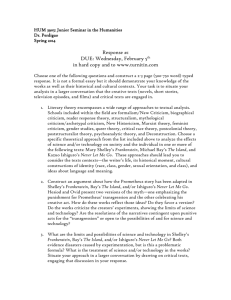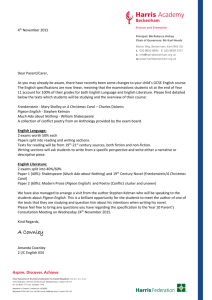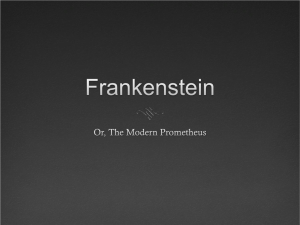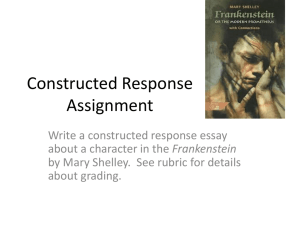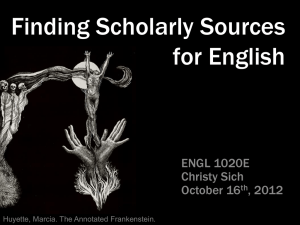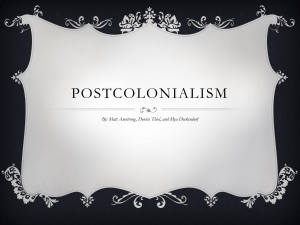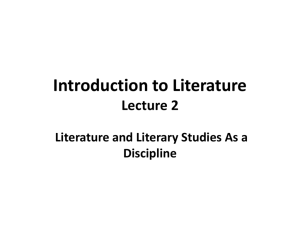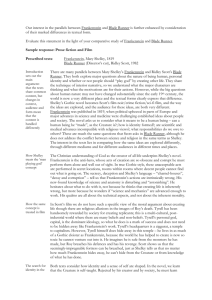British Literature Since 1700: Britain and the World
advertisement
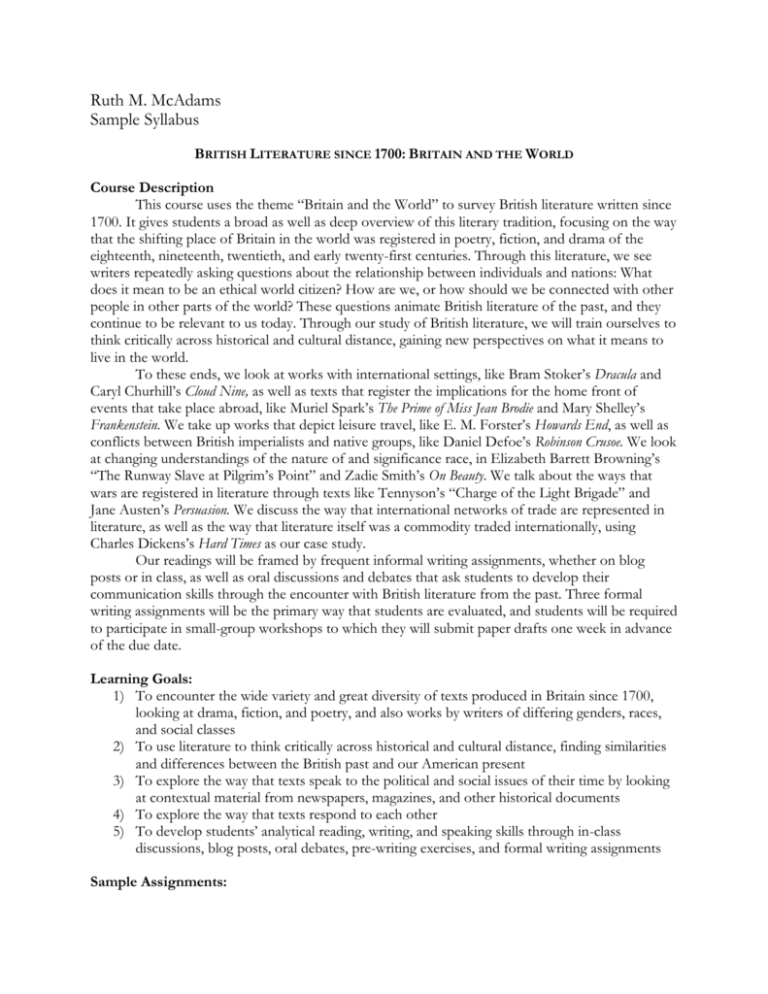
Ruth M. McAdams Sample Syllabus BRITISH LITERATURE SINCE 1700: BRITAIN AND THE WORLD Course Description This course uses the theme “Britain and the World” to survey British literature written since 1700. It gives students a broad as well as deep overview of this literary tradition, focusing on the way that the shifting place of Britain in the world was registered in poetry, fiction, and drama of the eighteenth, nineteenth, twentieth, and early twenty-first centuries. Through this literature, we see writers repeatedly asking questions about the relationship between individuals and nations: What does it mean to be an ethical world citizen? How are we, or how should we be connected with other people in other parts of the world? These questions animate British literature of the past, and they continue to be relevant to us today. Through our study of British literature, we will train ourselves to think critically across historical and cultural distance, gaining new perspectives on what it means to live in the world. To these ends, we look at works with international settings, like Bram Stoker’s Dracula and Caryl Churhill’s Cloud Nine, as well as texts that register the implications for the home front of events that take place abroad, like Muriel Spark’s The Prime of Miss Jean Brodie and Mary Shelley’s Frankenstein. We take up works that depict leisure travel, like E. M. Forster’s Howards End, as well as conflicts between British imperialists and native groups, like Daniel Defoe’s Robinson Crusoe. We look at changing understandings of the nature of and significance race, in Elizabeth Barrett Browning’s “The Runway Slave at Pilgrim’s Point” and Zadie Smith’s On Beauty. We talk about the ways that wars are registered in literature through texts like Tennyson’s “Charge of the Light Brigade” and Jane Austen’s Persuasion. We discuss the way that international networks of trade are represented in literature, as well as the way that literature itself was a commodity traded internationally, using Charles Dickens’s Hard Times as our case study. Our readings will be framed by frequent informal writing assignments, whether on blog posts or in class, as well as oral discussions and debates that ask students to develop their communication skills through the encounter with British literature from the past. Three formal writing assignments will be the primary way that students are evaluated, and students will be required to participate in small-group workshops to which they will submit paper drafts one week in advance of the due date. Learning Goals: 1) To encounter the wide variety and great diversity of texts produced in Britain since 1700, looking at drama, fiction, and poetry, and also works by writers of differing genders, races, and social classes 2) To use literature to think critically across historical and cultural distance, finding similarities and differences between the British past and our American present 3) To explore the way that texts speak to the political and social issues of their time by looking at contextual material from newspapers, magazines, and other historical documents 4) To explore the way that texts respond to each other 5) To develop students’ analytical reading, writing, and speaking skills through in-class discussions, blog posts, oral debates, pre-writing exercises, and formal writing assignments Sample Assignments: 1) Jane Austen’s novels have been described as portraits of insular provincial life, and yet as we have discussed, Persuasion is deeply aware of the context of the Napoleonic Wars. Write a five-page paper analyzing the short passage at the beginning of the novel that discusses the Baronetage and the NavyList, two publications that shape characters’ perceptions of the outside world and reflect the tumult of war. 2) Your small group will be assigned to take on the role of either Victor Frankenstein or his Creature (from Shelley’s Frankenstein). You will have 20 minutes to prepare your arguments for an oral debate with the other side. You will debate the following questions: Once the Creature was created, what responsibilities (if any) does Victor Frankenstein have to him? What is ethical to create him at all? 3) Elizabeth Barrett Browning’s “The Runaway Slave at Pilgrim’s Point” was an Abolitionist text, but its attitude toward race is complicated. In a series of blog posts, discuss with your classmates some of the passages that suggests the way the poem understands and represents race. Write one 300-word post of your own, and then write two 200-word responses to the posts of two of your classmates. On what grounds does the poem make an Abolitionist argument? Does the poem see people of African descent as equal to Europeans in every way, or are their racial differences? If so, what are they and why? 4) Zadie Smith’s On Beauty is said to be a rewriting of E. M. Forster’s Howards End, and yet the connection is not always obvious. In a 7-page final paper, analyze the way a particular character or scene from Howard’s End is adapted in On Beauty. What do the similarities and differences suggest about the relationship between Forster’s Britain and Smith’s Anglo-American world? Course Calendar Week 1: Daniel Defoe, Robinson Crusoe Week 2: Poems by Mary Leapor, Mary Wortley Montagu, and Thomas Gray Week 3: John Gay, Beggar’s Opera Week 4: William Wordsworth and Samuel Taylor Coleridge, Lyrical Ballads Paper #1 Draft Due Week 5: Jane Austen, Persuasion Week 6: Week 7: Week 8: Mary Shelley, Frankenstein Charles Dickens, Hard Times Poems by Elizabeth Barrett Browning, Alfred Tennyson Week 9: Bram Stoker, Dracula Week 10: Week 11: Week 12: Week 13: E. M. Forster, Howards End Virginia Woolf, To the Lighthouse and Muriel Spark, The Prime of Miss Jean Brodie Seamus Heaney, Beowulf Caryl Churchill, Cloud Nine Week 14: Zadie Smith, On Beauty Paper #1 Revision Due Paper #2 Draft Due Paper #2 Revision Due Final Paper Draft Due Final Paper Revision Due
